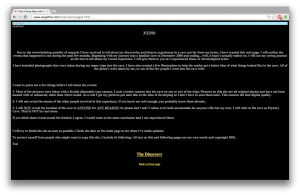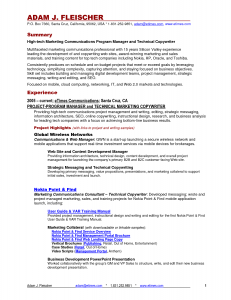It is not always possible or practical to divorce your professional identity from your personal identity. Sometimes they are one in the same, or they are too intertwined to distinguish between. But, on rare occasions, it is completely conceivable for an individual to maintain identities that exist separately in workplace and recreational contexts. These rare occasions are, in my experience, when a personal is most likely to succeed in the workplace.
I am not suggesting that one must alter, refine, or obscure certain aspects of their personality to fit the role of “the perfect employee.” On the contrary, I believe possessing the cognizance of when a certain set of behaviors or beliefs are inappropriate or unnecessary to display in the workplace that one more comfortable assumes the role of “the perfect employee.”
It is a time-tested truth that no social setting can exist without a status quo, and that opposing the status quo or attempting to change it, yields no results—with the exception of oppressive or bloodthirsty regimes. But the office is a far cry from Rwanda in the Spring of 1994, management does not even remotely resemble the akazu, and your boss cannot be compared to Robert Kajuga; to complain, while you are on the clock, about the break room injustices and parking garage massacres you are subjected to is a massive violation of the contextual norms of professionalism.
A little airing of grievances around the water cooler is an expected and accepted occurrence in the workplace, but it should never extend beyond mere words—and, if one of the participants were able to leave their personal identity in their personal life, and exist only in their professional identity while in their professional life, then that individual would never find grievances to air solely for the sake of adhering to the status quo, but rather because they wished to maintain an environment that perpetuated professionalism, or because they believed that they had a solution to a genuine problem.
A well-maintained and fairly balanced status quo can benefit every employee, and an employee who sticks to it, rather than vehemently disparaging it, may even go as far as to encourage other employees to work harder and strive for excellence, in hopes of recognition, promotion, or opportunity. In professional contexts, professionals are expected to perform in a specific manner or demeanor. Doing so not only reflects positively on the individual who respects these contexts, but can also have a positive influence on other employees who wish to advance in their profession, and sees others doing so by following the status quo, not fighting against it.
Nearly anyone who has held a job for any amount of time, despite the field, has heard the colloquialism, “Leave your baggage at the door,” and in the instance of professional versus personal identity, it has never been more true. The workplace is a setting with high expectations, quotas, and standards, and to succeed in such settings, one must act as the situation commands: with a professional demeanor that is not influenced by outside events.
Featured image taken from Comedy Central.







